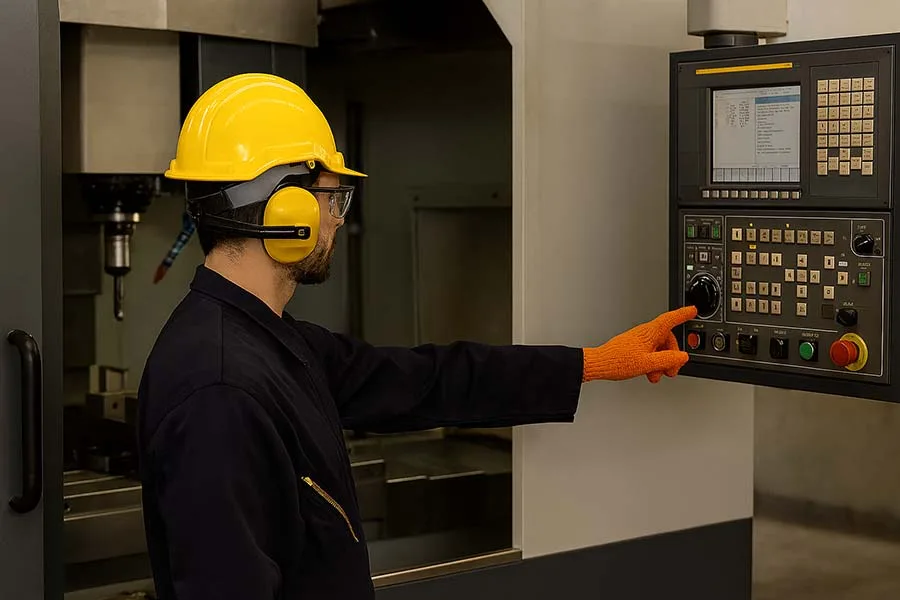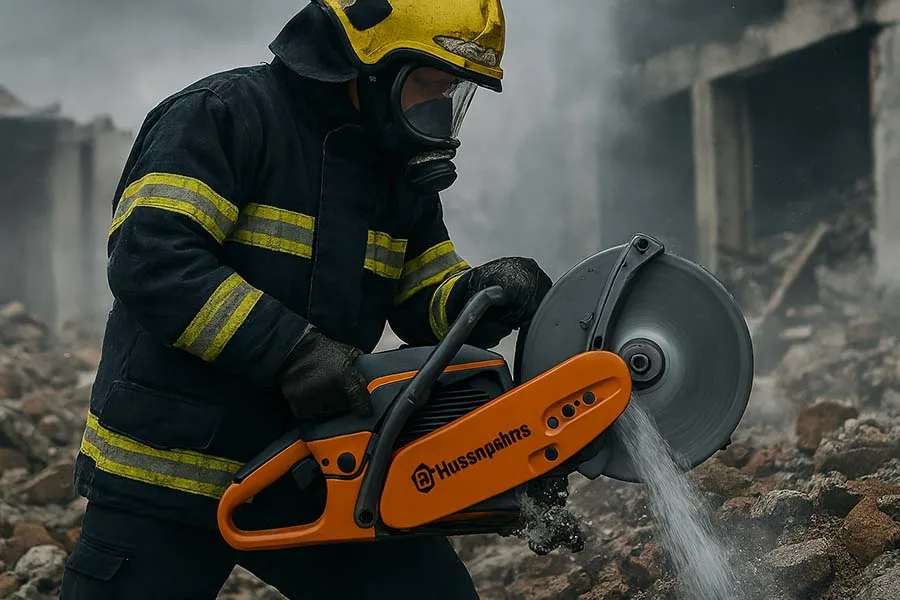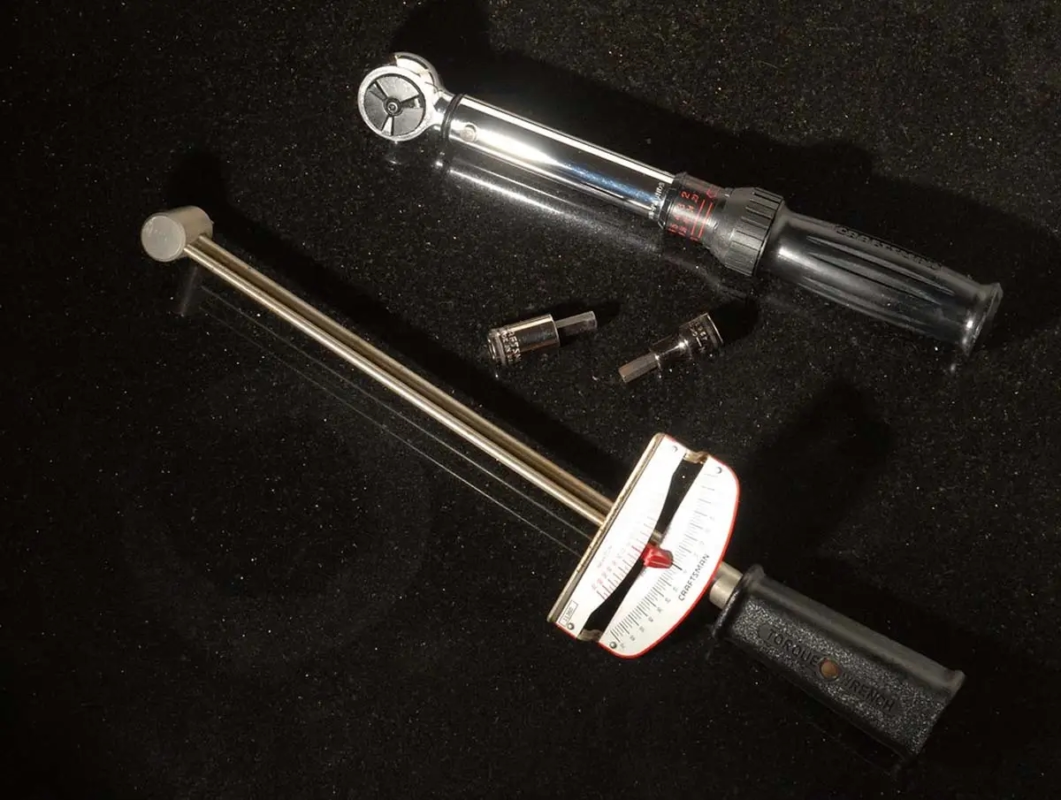Introduction
CNC machines are the backbone of modern manufacturing. From aerospace to automotive, they deliver precision at scale. But with great power comes great responsibility — and no, we’re not quoting Spider-Man here. CNC machines, while efficient, can also be dangerous if safety practices aren’t followed. Whether you’re an operator, shop manager, or plant owner, prioritizing safety is not optional — it’s a necessity that protects both people and productivity.
In this article, we’ll explore the best practices for CNC safety, why they matter, and how you can implement them on the shop floor.
Why CNC Safety Is Important
CNC machines can run at incredible speeds, with cutting tools rotating thousands of times per minute. Add sharp tools, high heat, and moving parts, and you’ve got a potential recipe for injury or damage if precautions are ignored. Beyond worker safety, accidents can lead to costly downtime, scrapped parts, and even permanent machine damage.
In short: safety = efficiency + profitability + peace of mind.
Common CNC Safety Hazards
Before diving into best practices, let’s highlight the main risks CNC operators face:
- Entanglement: Loose clothing, jewelry, or hair getting caught in moving parts.
- Flying debris: Chips, sparks, or broken tools.
- Electrical hazards: Faulty wiring or poor maintenance.
- Tool crashes: Incorrect setups leading to tool or spindle failures.
- Chemical exposure: Coolants and lubricants can cause burns or respiratory issues.
Recognizing these hazards is the first step to preventing accidents.
Best Practices for CNC Safety
1. Wear Proper Personal Protective Equipment (PPE)
- Safety glasses with side shields are non-negotiable.
- Steel-toe shoes and gloves (when appropriate) protect against falling objects and sharp edges.
- Ear protection for high-noise environments.
- No loose clothing, jewelry, or untied hair near machines.
2. Follow Lockout/Tagout Procedures
Always de-energize machines before maintenance. Skipping lockout/tagout (LOTO) is one of the leading causes of serious workplace accidents.
3. Conduct Regular Machine Inspections
Preventive maintenance goes hand-in-hand with safety. Checking for worn belts, faulty wiring, or coolant leaks ensures safer operation and reduces the risk of sudden failures.
4. Keep Work Areas Clean
Chips, coolant spills, and clutter around machines aren’t just messy — they’re hazards. A clean shop floor improves workflow and reduces slips, trips, and fire risks.
5. Train and Certify Operators
Never assume “on-the-job learning” is enough. CNC operators should be properly trained and certified in both machine use and safety protocols. Refresher courses keep skills sharp and ensure compliance with evolving standards.
6. Use Proper Workholding and Tool Setup
Improper clamping or loose fixturing can cause parts or tools to fly out during machining. Double-check setups before pressing “cycle start.”
7. Implement Emergency Stops and Safety Shields
Emergency stop buttons should be clearly accessible. Machine enclosures and shields protect operators from flying debris and coolant splash.
8. Establish a Safety-First Culture
Post safety guidelines clearly, encourage workers to report hazards, and reward adherence to safety standards. Culture is as critical as equipment.
Funny Fact
Some CNC shops jokingly say that PPE stands for “Protect People’s Ears” because hearing protection is often forgotten. In reality, PPE covers much more — but it’s a good reminder not to underestimate noise hazards!
Lesser-Known Fact
Did you know? In many modern CNCs, the software itself has built-in safety protocols, such as crash detection, spindle load monitoring, and automatic shutdown features. These innovations prevent costly mistakes and protect operators from danger.
Further Read
- CNC Machining Training & Support: Your Complete Resource
- Glossary of CNC Terms
- FAQs About CNC Machining – Answers to the Most Common Questions
- Best Practices for CNC Safety: Protecting Operators & Machines
- CNC Operator Certification Paths: Which One Is Right for You?
Conclusion
CNC safety isn’t just about compliance — it’s about ensuring a productive, efficient, and healthy workplace. By following these best practices, you not only protect operators but also improve uptime and machine longevity.
👉 What about your shop? Which CNC safety practice do you think is the most overlooked? Share your thoughts in the comments below and let’s build safer workplaces together!





